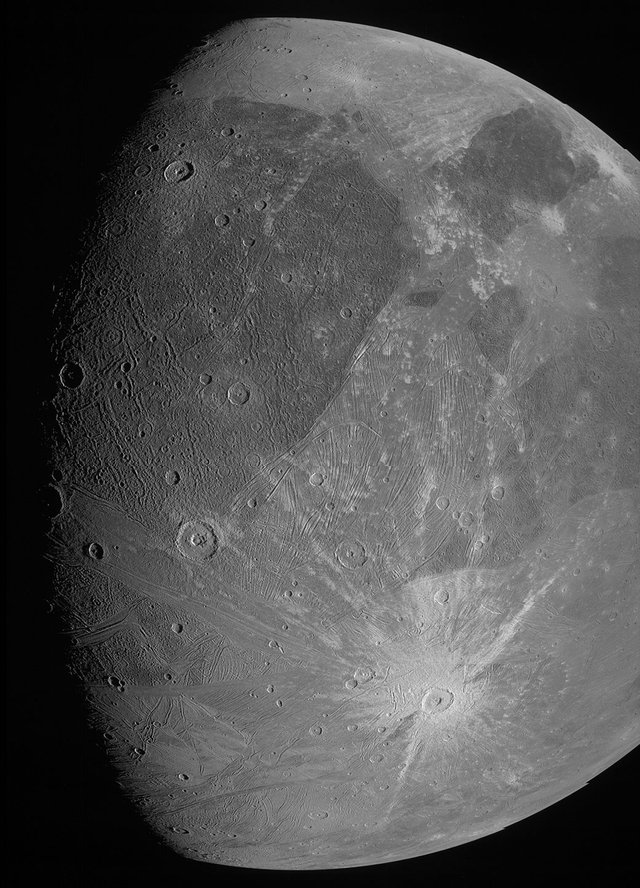(Jun 8, 2021; NASA | Jupiter)
The first two images from NASA Juno’s June 7, 2021, flyby of Jupiter’s giant moon Ganymede have been received on Earth. The photos – one from the Jupiter orbiter’s JunoCam imager and the other from its Stellar Reference Unit star camera – show the surface in remarkable detail, including craters, clearly distinct dark and bright terrain, and long structural features possibly linked to tectonic faults.
...
“The conditions in which we collected the dark side image of Ganymede were ideal for a low-light camera like our Stellar Reference Unit,” said Heidi Becker, Juno’s radiation monitoring lead at JPL. “So this is a different part of the surface than seen by JunoCam in direct sunlight. It will be fun to see what the two teams can piece together.”
Read the rest from NASA: See the First Images NASA’s Juno Took As It Sailed by Ganymede
)

The difference between our moon and Ganymede is not much noticeable, from the image it is noted that it does not have an atmosphere but it can have a gravitational field that allows an astronaut to explore it in some future, it was even talked about that there could be life in Ganymede but if there is life it will be microbial.
Downvoting a post can decrease pending rewards and make it less visible. Common reasons:
Submit